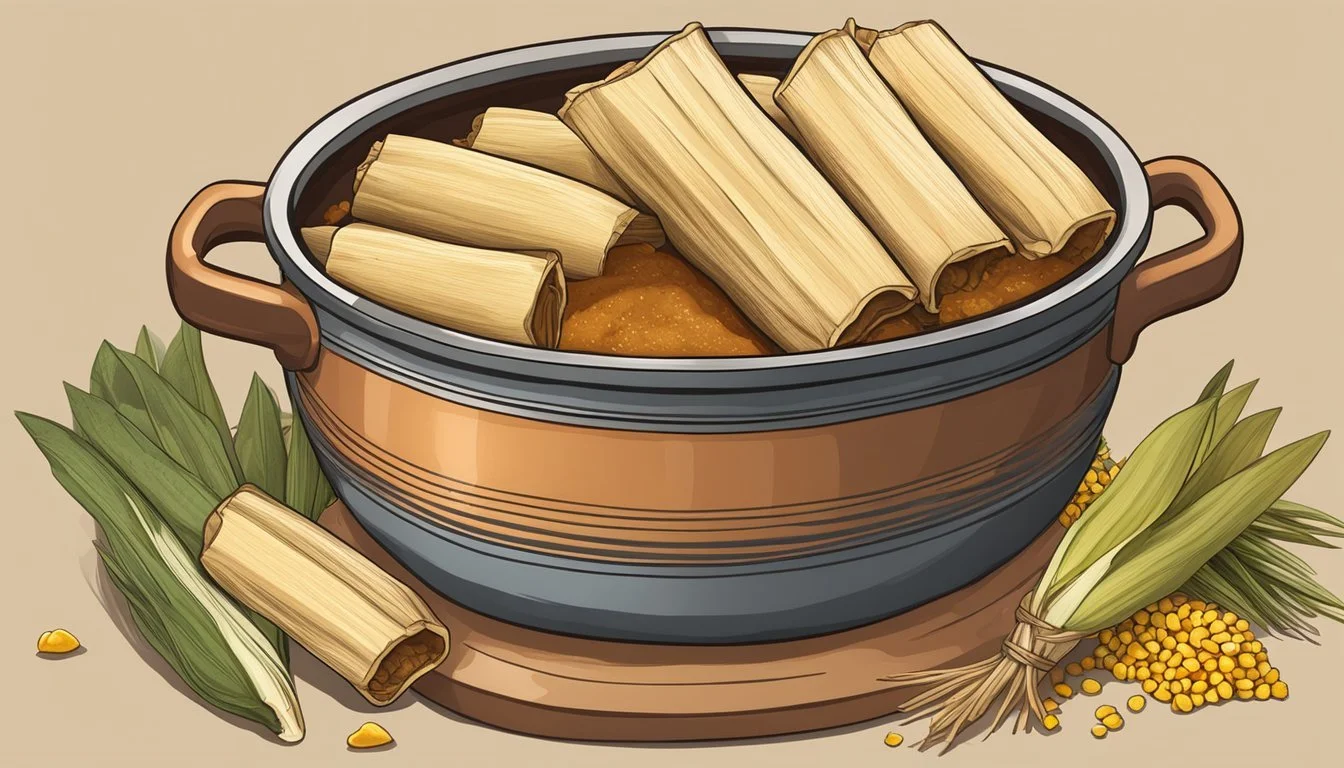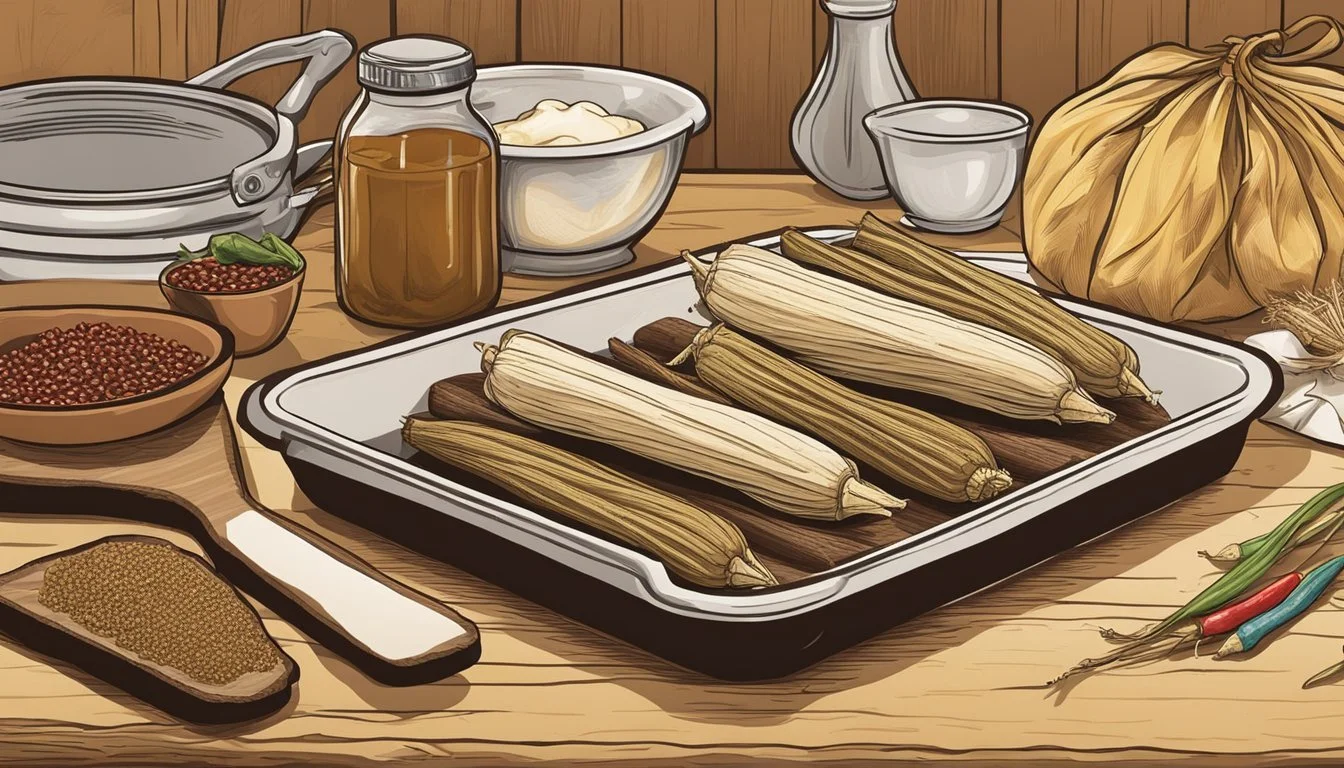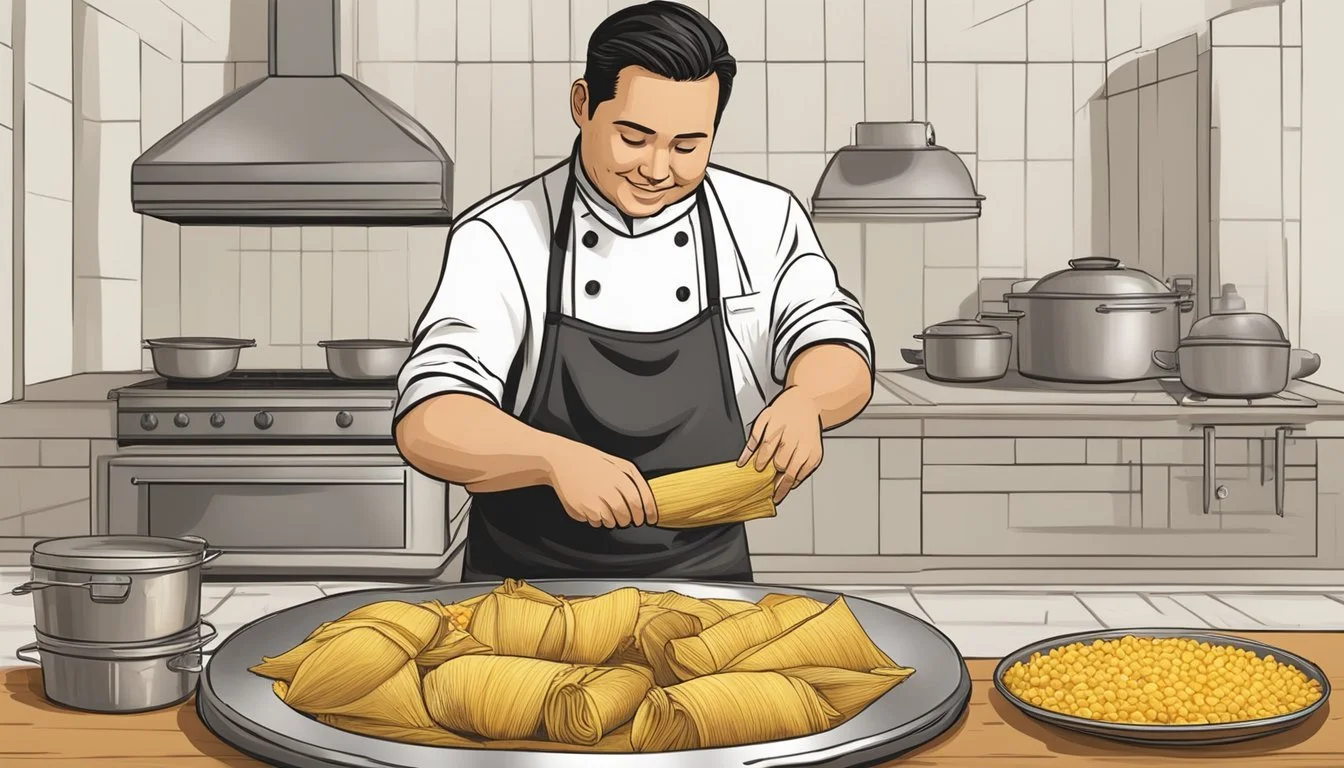How to Prepare Texas-Style Beef Tales
Your Ultimate Guide
Texas-style beef tamales are a culinary tradition steeped in community and family heritage, particularly celebrated during holidays such as Christmas. These savory bundles are often prepared in large quantities, creating both an opportunity for communal cooking and a delicious treat to share with friends and family.
The process of making tamales is as rich in culture as it is in flavor, involving multiple steps that have been passed down through generations. Tamales begin with a corn masa dough, filled with a spiced beef mixture, and then wrapped in corn husks. They are then steamed to perfection, resulting in a dish that encapsulates the warmth and spirit of Texan hospitality.
Although tamales can be enjoyed all year round, their preparation is especially significant during festive seasons, where the act of making tamales becomes a reason for gathering and celebration. Each tamale is a small packet of tradition, crafted with care and meant to be enjoyed among those who appreciate the deep-rooted customs of Texas.
History and Significance of Texas-Style Beef Tamales
Texas-style beef tamales carry a rich history and are a product of cultural melding, representing traditions that span centuries. Their significance in Texas is not just culinary but also social, as they are a centerpiece for gatherings known as tamaladas.
Origins and Cultural Significance
The origin of tamales can be traced back to the indigenous Aztec culture, where they were an essential food item. This dish has persevered through time, largely due to its cultural importance and adaptability. Initially, tamales were simple, filled with whatever was available. As they became a part of Texas culture, a blend of indigenous and Spanish influences shaped their preparation, leading to a variety of fillings, with beef being prominent in the Texan version.
Evolution of the Tamale in Texas
Over the years, the tamale evolved to reflect the local flavors and resources of Texas. The introduction of beef into tamales is significant, likely tied to the cattle ranching that is a large part of Texas' identity. Traditional recipes were adjusted with Texas sensibilities, incorporating local ingredients and evolving into a distinct style known for its hearty beef filling.
Modern Traditions and Tamaladas
Today, tamales maintain their status as a celebratory food in Texas, especially during holidays and family reunions. The tradition of the tamalada, a social event where family and friends come together to make tamales, is a testament to the tamale's role in community life. These gatherings are not just about food preparation; they are a means of passing down recipes, techniques, and heritage from one generation to another in a festive atmosphere.
Key Ingredients and Shopping Tips
Preparing authentic Texas-style beef tamales requires selecting the highest quality ingredients. This section helps ensure that shoppers choose the right type of corn masa, beef, and corn husks, which are pivotal for crafting traditional tamales.
Selecting the Right Corn Masa
Corn masa, the dough used in tamales, comes in two primary forms: ready-made masa from a tamale factory and masa harina, which is a dried corn dough mix. For an authentic flavor, ready-made masa is preferable. If opting for masa harina, shoppers should look for brands that are well-regarded for their flavor and texture.
Masa Type: Ready-made masa (preferable), Masa harina (requires reconstitution)
Brands: Choose reputable brands known for quality
Texture: Masa should be moist and pliable
Choosing Beef and Other Fillings
The beef for tamales should be well-marbled for richness and flavor, most often using cuts like chuck or brisket. It can be slow-cooked and shredded. While beef is traditional, shoppers may also consider pork, chicken, or even vegetarian options like cheese, beans, or vegetables. Spices and sauces play a crucial role in the filling's flavor, so selecting a blend of traditional spices like cumin, chili powder, and garlic, along with a robust sauce, is essential.
Main Filling: Marbled beef (chuck, brisket)
Alternative Fillings: Pork, chicken, cheese, vegetables, beans
Spices and Sauces: Cumin, chili powder, garlic, traditional sauces
Corn Husks and Alternatives
Dried corn husks are the classic wrapping for tamales, providing a subtle flavor and allowing for easy steaming. They should be soaked in hot water to soften before use. Alternatives to corn husks include parchment paper or banana leaves, though these may alter the flavor profile and are less traditional.
Wrap Choices: Corn husks (traditional), parchment paper, banana leaves (non-traditional)
Preparation: Soak corn husks in hot water until pliable
When shopping for these ingredients, it's beneficial to visit stores specializing in Mexican foods to find the best quality and variety. Remember to ensure that all the ingredients are fresh and to seek advice from store personnel if unsure about the quality or type of ingredient needed.
Preparation Before Cooking
Preparing Texas-style beef tamales requires attention to detail before the actual cooking begins. This generally involves soaking the corn husks to make them pliable and preparing a rich and flavorful beef filling.
Soaking the Corn Husks
To ensure the corn husks are flexible enough for wrapping the tamales, they need to be soaked in warm water. The process is straightforward:
Submerge the corn husks in a large bowl or sink filled with warm water.
Place a heavy item, like a plate or pot, atop the husks to keep them fully submerged.
Soak the husks for at least 30 minutes or until they are softened and pliable.
Making the Beef Filling
The beef filling is central to the flavor of the tamales. It involves a blend of spices, tender beef, and a richly composed chile sauce. Here’s how to prepare the filling:
Selecting the Beef: A cut like brisket is ideal for its flavor and texture. It should be cooked until it is tender enough to shred.
Creating the Chile Paste:
Toast ancho chiles in a dry pan until they become fragrant.
Remove seeds and stems from the chilies, then soak them in hot water for about 20 minutes to rehydrate.
Blend the rehydrated chiles with spices such as cumin, garlic, and onion to create a smooth chile paste.
Brisket with Chile Paste:
Melt lard in a pot and sauté the chile paste for a few minutes.
Add the shredded brisket into the pot, mixing it thoroughly with the chile paste.
Pour in some beef broth, allowing the mixture to simmer and the flavors to meld.
Spices: Adjust the filling with additional spices like salt and pepper to taste.
Final Texture: The filling should be moist but not watery; it will continue to absorb flavor and moisture as the tamales steam.
By preparing the corn husks and beef filling according to these instructions, they're ready to be assembled into tamales that promise authentic Texas flavor.
Creating the Perfect Masa
The foundation of Texas-style beef tamales lies in the Masa, the dough that encases the filling. It requires specific ingredients and techniques to achieve the ideal texture and flavor, ensuring that the tamales are both satisfying and authentic.
Mixing Ingredients for Masa Dough
For the dough, one begins with masa harina, a traditional cornmeal flour. This is mixed with a fat—preferably lard, for its rich flavor, although vegetable shortening can be a suitable alternative. To this, kosher salt is added to enhance the taste, and baking powder to promote fluffiness in the dough. The liquid component is typically a broth—chicken, beef, or vegetable—to infuse additional flavor and the necessary moisture.
Here's a succinct breakdown of the initial masa dough composition:
Masa Harina: Start with a high-quality masa harina, particularly one formulated for tamales.
Lard: Use freshly rendered lard for the most authentic flavor or substitute with high-quality vegetable shortening.
Baking Powder: A teaspoon is usually sufficient to give the dough lift.
Kosher Salt: A pinch will do to bring out the flavors without overpowering.
Broth: Use warm broth to help amalgamate the dough more effectively.
Achieving the Right Texture and Flavor
Achieving the perfect texture means ensuring the masa dough is neither too dry nor too sticky. One can test the masa's readiness by forming a small ball and dropping it into cold water; it should float. If it doesn't, additional broth is necessary, which is kneaded into the dough then tested again.
For a robust flavor, the choice of broth and the quantity of salt are pivotal. The masa should taste seasoned but not salty, with the broth adding a subtle background flavor that complements the beef filling. Consistency is key: the masa should be uniformly mixed and possess a spreadable, slightly sticky consistency reminiscent of soft cookie dough.
It's essential to note:
Testing Floatation: Try the water test—a bit of masa should float in cold water, indicating it's ready for tamales.
Flavor Balance: The masa should have a seasoned taste from the salt and a rich background flavor from the broth.
Kneading: Knead the dough thoroughly, as it develops the texture and helps to incorporate air, making it lighter and fluffier.
Assembling the Tamales
In this section, readers will learn the precise method for spreading masa on corn husks and the proper techniques for filling and folding Texas-style beef tamales. Attention to technique is crucial to ensure each tamale is uniformly filled and wrapped for even cooking.
Spreading Masa on Corn Husks
Before one begins, it is essential to ensure the corn husks are soaked in warm water until they are pliable, usually for at least an hour. One lays a corn husk flat on a clean surface, with the smoother side facing up and the wider end toward oneself. Then, with a spoon or spatula, one should spread a thin layer of precooked masa dough evenly across the surface of the husk, leaving a border around the edge. The masa should not be too thick, as it will expand during steaming.
Filling and Folding Techniques
Once the masa is spread, one can place a spoonful of the beef filling down the center of the masa. The beef filling should be rich and moist but not watery, to prevent the husks from becoming soggy. To fold, one brings the sides of the corn husk together so that the masa envelops the beef filling, then folds the bottom of the husk up. This fold should be tight enough to hold the contents within, but not so tight as to squeeze the filling out. The top end can be left open or tied with a strip of corn husk to prevent the filling from escaping during steaming. When placing the tamales in the steamer, one should arrange them open-end up to allow the tamales to expand and cook properly.
Cooking Methods and Techniques
Proper steaming is crucial for producing the perfect Texas-style beef tamale, ensuring that the masa has a soft texture and that the filling is heated through. The cooking process also involves testing for doneness to guarantee the tamales are ready to enjoy.
Steaming the Tamales
Preparation: Before steaming, one should ensure the tamales are snug in the steamer or pot, standing open-end up.
Steaming Process: The pot should be filled with water just below the basket level to avoid the tamales from soaking.
Covering: It is recommended to use a tight-fitting lid or a cloth over the tamales for even steaming.
Duration: Tamales typically require steaming for about 1.5 to 2 hours.
Heat: The heat should remain consistently medium to high to maintain a constant steam without evaporating all the water.
Testing for Doneness
Appearance Check: When cooked, the masa should no longer stick to the corn husk and should have a firm yet tender texture.
Temperature Check: An internal temperature of 165°F (74°C) ensures that the beef filling is fully cooked.
Serving Suggestions and Accompaniments
The perfect serving of Texas-style beef tamales is complemented by a symphony of sides and sauces. Thoroughly selected accompaniments not only bring out the natural flavors of tamales but also add a satisfying texture and visual appeal to the plate.
Traditional and Creative Sides
Texas-style beef tamales pair beautifully with a variety of sides. Here are some traditional and innovative options to consider:
Beans: Refried or black beans offer a creamy texture and a rich taste.
Rice: A side of Spanish or cilantro lime rice complements the tamales' robust flavors.
Salads: Opt for a fresh, zesty coleslaw or a jicama salad for a crisp contrast.
Vegetables: Grilled corn on the cob or roasted peppers add a sweet and smoky hint.
Plantains: Tostones, or fried green plantains, bring a crispy and unique side to the table.
Offering a balance between hearty and light, these sides ensure a well-rounded meal that highlights the tamales.
Making Homemade Salsas and Sauces
Creating homemade salsas and sauces for Texas-style beef tamales elevates the dish with personalized touches. Here’s a simple guide to two essential accompaniments:
Salsa: Combine diced tomatoes, onions, cilantro, lime juice, and jalapeños. For a smokier flavor, one could also roast the tomatoes and jalapeños prior to blending.
Sauces:
Chili sauce: Mix chili powder with garlic, cumin, and chicken broth for a base, simmer until thickened.
Cream-based: Blend sour cream with chipotle peppers for a spicy, creamy drizzle.
Both salsa and sauces should be bold enough to stand up to the spices in the tamales without overpowering them. These condiments can be drizzled on top or served on the side for dipping.
Storage and Reheating Tips
Maintaining the quality of Texas-style beef tamales is crucial, and proper storage and reheating methods are key to preserving their flavor and texture. These techniques help tamales stay delicious as if they were just made.
Proper Refrigeration and Freezing
To refrigerate beef tamales, one should ensure they are tightly covered with aluminum foil or plastic wrap to prevent them from drying out. Tamales can be stored in the refrigerator for up to one week. For freezing, it is advisable to individually wrap tamales in foil or plastic wrap and then place them inside a sealable plastic bag to prevent freezer burn. Tamales can be frozen for up to six months.
Reheating for Fresh Taste
When reheating tamales, there are several methods that can be used:
Oven: Preheat to 350ºF. For previously refrigerated tamales, wrap them in foil and bake for about 15-20 minutes. If the tamales were frozen, extend the time to 25 minutes.
Steam: Place the tamales with their husks on in a steamer basket over boiling water. Cover and steam for 15-20 minutes, ensuring they are heated through.
Microwave: For a quick option, remove tamales from their husks and wrap in a damp paper towel. Heat on high for about 2-3 minutes, depending on the microwave's power.
Conclusion
Preparing homemade Texas-style beef tamales is a culinary tradition that brings families together, especially during holiday celebrations. The process, while time-consuming, offers a rewarding experience and an opportunity to share this rich tradition with others.
Key Points to Remember:
Steaming is the classic cooking method; tamales should be steamed for about 1 1/2 to 2 1/2 hours.
Baking can be an alternative, where tamales are heated at 375°F (190°C) for 25-35 minutes.
Microwaving offers a quick solution to reheat tamales, usually taking 2-3 minutes on high power.
They know that patience is crucial, as the time taken ensures the masa is cooked thoroughly and imparts the perfect texture. It is essential that the tamales are placed open-end up during steaming to keep the fillings secure. A closely fitted lid or a cloth over the pot ensures even cooking and retains the right amount of moisture.
Sharing tamales is central to the tradition, making them perfect for family gatherings or gifting to neighbors and friends. Eating tamales during the holidays has become a symbolic gesture in Texas, showcasing the warmth and generosity of its people.
The making of tamales is more than just a means to a delicious end—it’s the continuation of a cultural heritage that families hold dear. With each batch of tamales, they pass down age-old techniques and stories, ensuring that the spirit of Texas and the essence of the celebration remain at the heart of each shared meal.








